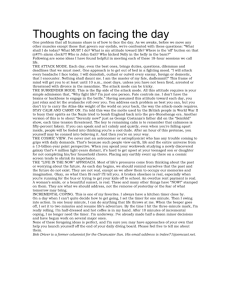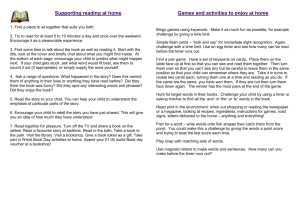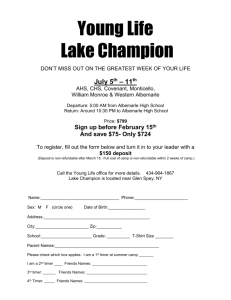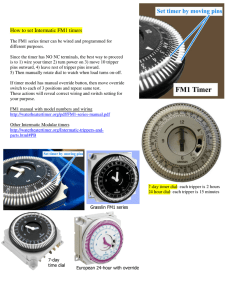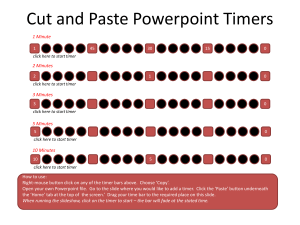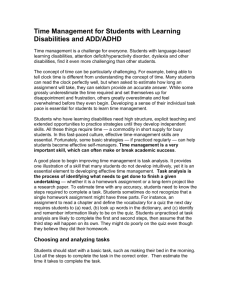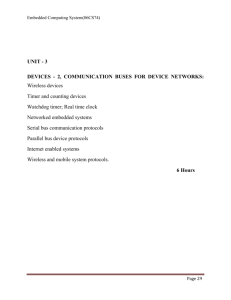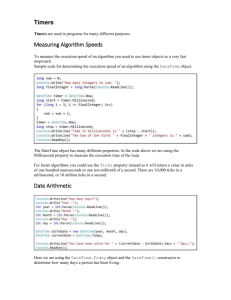Reducing Anxiety and Increasing Participation with a NO HANDS
advertisement
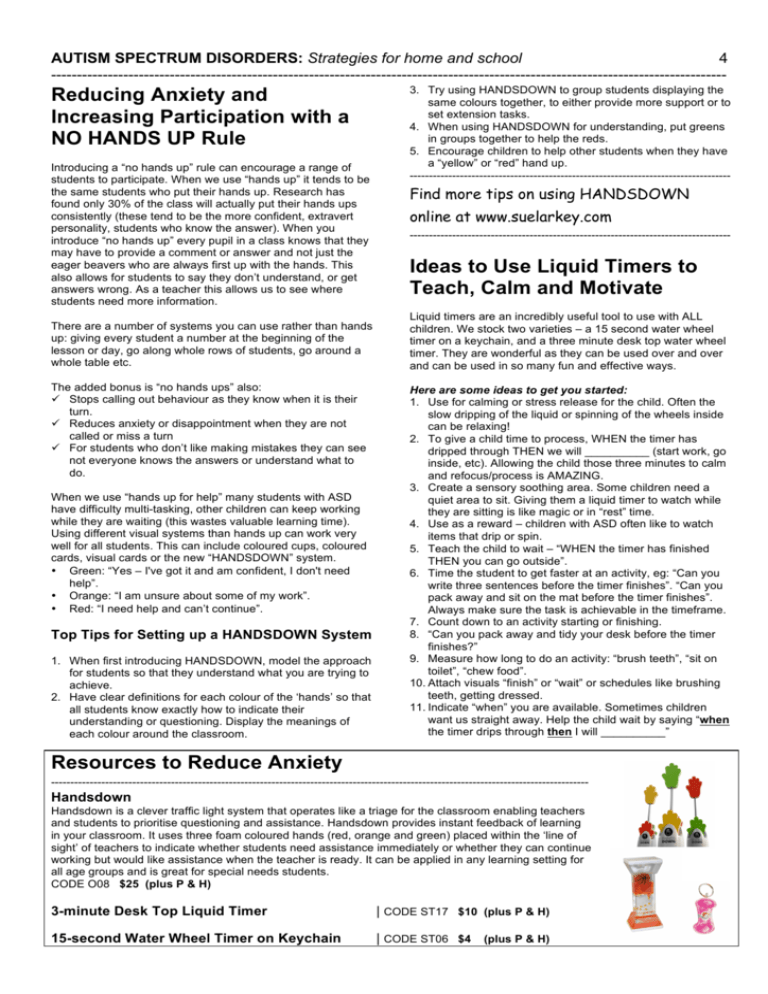
AUTISM SPECTRUM DISORDERS: Strategies for home and school 4 ----------------------------------------------------------------------------------------------------------------------------------- Reducing Anxiety and Increasing Participation with a NO HANDS UP Rule Introducing a “no hands up” rule can encourage a range of students to participate. When we use “hands up” it tends to be the same students who put their hands up. Research has found only 30% of the class will actually put their hands ups consistently (these tend to be the more confident, extravert personality, students who know the answer). When you introduce “no hands up” every pupil in a class knows that they may have to provide a comment or answer and not just the eager beavers who are always first up with the hands. This also allows for students to say they don’t understand, or get answers wrong. As a teacher this allows us to see where students need more information. There are a number of systems you can use rather than hands up: giving every student a number at the beginning of the lesson or day, go along whole rows of students, go around a whole table etc. The added bonus is “no hands ups” also: ü Stops calling out behaviour as they know when it is their turn. ü Reduces anxiety or disappointment when they are not called or miss a turn ü For students who don’t like making mistakes they can see not everyone knows the answers or understand what to do. When we use “hands up for help” many students with ASD have difficulty multi-tasking, other children can keep working while they are waiting (this wastes valuable learning time). Using different visual systems than hands up can work very well for all students. This can include coloured cups, coloured cards, visual cards or the new “HANDSDOWN” system. • Green: “Yes – I've got it and am confident, I don't need help”. • Orange: “I am unsure about some of my work”. • Red: “I need help and can’t continue”. Top Tips for Setting up a HANDSDOWN System 1. When first introducing HANDSDOWN, model the approach for students so that they understand what you are trying to achieve. 2. Have clear definitions for each colour of the ‘hands’ so that all students know exactly how to indicate their understanding or questioning. Display the meanings of each colour around the classroom. 3. Try using HANDSDOWN to group students displaying the same colours together, to either provide more support or to set extension tasks. 4. When using HANDSDOWN for understanding, put greens in groups together to help the reds. 5. Encourage children to help other students when they have a “yellow” or “red” hand up. ----------------------------------------------------------------------------------- Find more tips on using HANDSDOWN online at www.suelarkey.com ----------------------------------------------------------------------------------- Ideas to Use Liquid Timers to Teach, Calm and Motivate Liquid timers are an incredibly useful tool to use with ALL children. We stock two varieties – a 15 second water wheel timer on a keychain, and a three minute desk top water wheel timer. They are wonderful as they can be used over and over and can be used in so many fun and effective ways. Here are some ideas to get you started: 1. Use for calming or stress release for the child. Often the slow dripping of the liquid or spinning of the wheels inside can be relaxing! 2. To give a child time to process, WHEN the timer has dripped through THEN we will __________ (start work, go inside, etc). Allowing the child those three minutes to calm and refocus/process is AMAZING. 3. Create a sensory soothing area. Some children need a quiet area to sit. Giving them a liquid timer to watch while they are sitting is like magic or in “rest” time. 4. Use as a reward – children with ASD often like to watch items that drip or spin. 5. Teach the child to wait – “WHEN the timer has finished THEN you can go outside”. 6. Time the student to get faster at an activity, eg: “Can you write three sentences before the timer finishes”. “Can you pack away and sit on the mat before the timer finishes”. Always make sure the task is achievable in the timeframe. 7. Count down to an activity starting or finishing. 8. “Can you pack away and tidy your desk before the timer finishes?” 9. Measure how long to do an activity: “brush teeth”, “sit on toilet”, “chew food”. 10. Attach visuals “finish” or “wait” or schedules like brushing teeth, getting dressed. 11. Indicate “when” you are available. Sometimes children want us straight away. Help the child wait by saying “when the timer drips through then I will __________” Resources to Reduce Anxiety ------------------------------------------------------------------------------------------------------------------------------------------- Handsdown Handsdown is a clever traffic light system that operates like a triage for the classroom enabling teachers and students to prioritise questioning and assistance. Handsdown provides instant feedback of learning in your classroom. It uses three foam coloured hands (red, orange and green) placed within the ‘line of sight’ of teachers to indicate whether students need assistance immediately or whether they can continue working but would like assistance when the teacher is ready. It can be applied in any learning setting for all age groups and is great for special needs students. CODE O08 $25 (plus P & H) 3-minute Desk Top Liquid Timer | CODE ST17 $10 (plus P & H) 15-second Water Wheel Timer on Keychain | CODE ST06 $4 (plus P & H)

